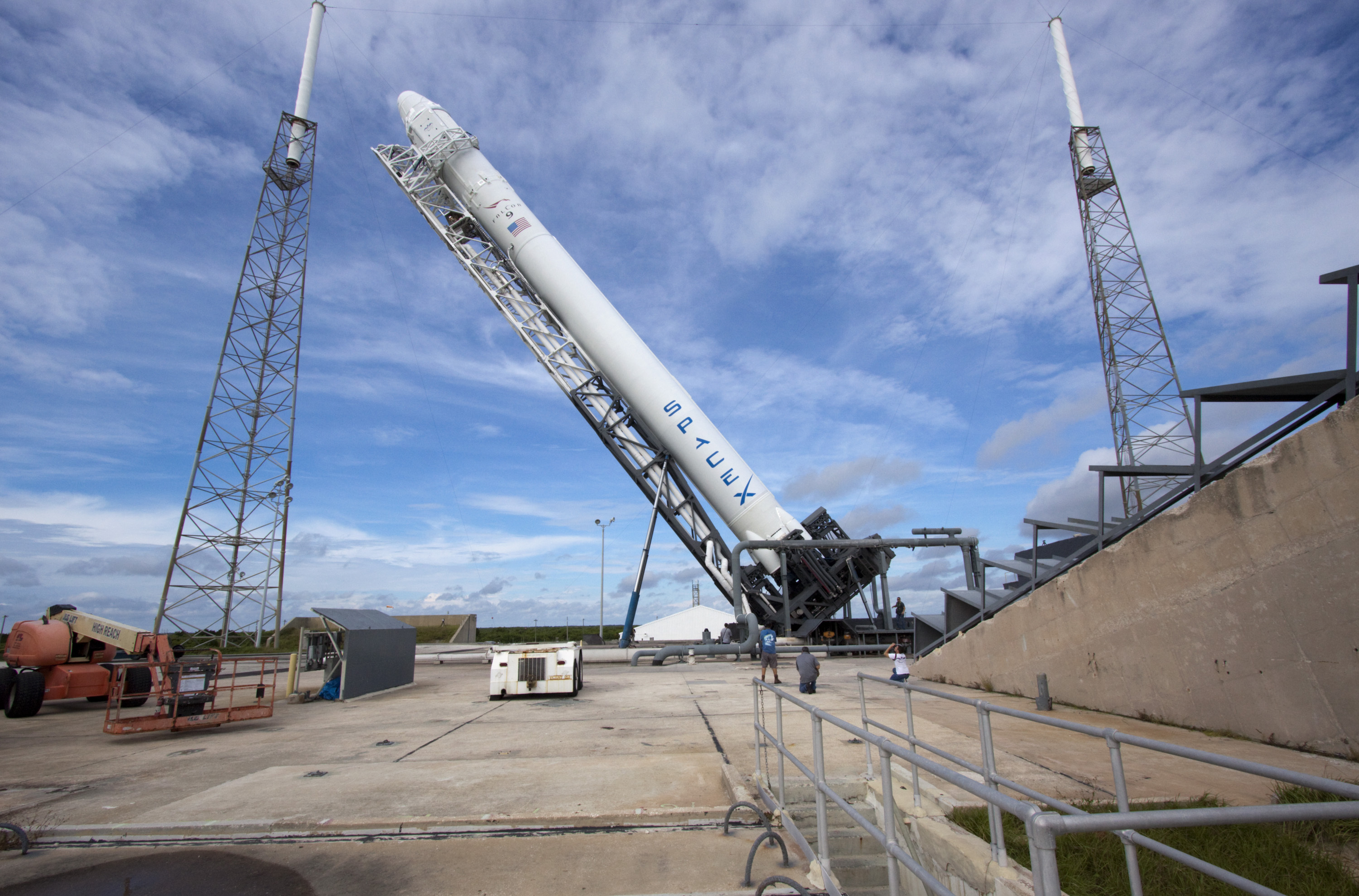NASA Tracking Space Junk Ahead of Private Launch to Space Station

A piece of space junk that may buzz the International Space Station Monday has NASA weighing plans to move the orbiting lab, even as a private space capsule stands poised to launch toward the station on Sunday night.
The space debris will pass near enough to the space station on Monday morning (Oct. 8) to require an avoidance maneuver as a safety precaution, NASA space station program manager Mike Suffredini said in a briefing today (Oct. 6).
The decision on whether to move the station is not yet final, but if such a maneuver is required it will not affect the scheduled launch of a private Dragon space capsule to the station, Suffredini said.
Built by the private spaceflight company SpaceX, the unmanned Dragon spacecraft is set to launch Sunday night at 8:35 p.m. EDT (0035 Monday GMT) from a pad at Cape Canaveral Air Force Station in Florida. The spacecraft is packed with about 1,000 pounds (453 kilograms) of supplies for the space station's three-person crew, including food and science gear.
"I can't imagine a scenario in which we ask SpaceX not to launch," Suffredini said.
Suffredini said that if the space station does have to dodge the debris, it would likely just mean SpaceX's Dragon will take a bit longer to arrive than planned. Currently, the spacecraft is due to dock at the station on Wednesday (Oct. 10). [SpaceX's Dragon Poised to Sunday Launch (Photos)]
"They'll just adjust while they're flying if we have to do the move," Suffredini said.
Breaking space news, the latest updates on rocket launches, skywatching events and more!
NASA and its space station partners regularly move the space station when a piece of debris is expected to pass inside a preset safety perimeter. That safety zone is shaped like a pizza box and extends out 15 miles (25 kilometers) to either side, as well as a half-mile (0.75 km) above and below the station.
SpaceX's Dragon flight to the space station is the first commercial cargo delivery to the outpost under a $1.6 billion deal with NASA. That agreement calls for SpaceX to provide at least 12 cargo missions to the station using its robotic Dragon space capsules and Falcon 9 rockets.
The Hawthorne, Calif.-based SpaceX flew a successful demonstration flight to the station in May that set the stage for Sunday night's launch. Another company, Orbital Sciences Corp. of Virginia, is developing its own private rocket and spacecraft to fly cargo to the station under a $1.9 billion deal with NASA.
With the retirement of NASA's space shuttle fleet last year, the space agency is relying on private space taxis like those built by SpaceX, Orbital Sciences and others to provide resupply deliveries —and eventually astronaut flights —to the International Space Station.
Air Force weather officials said there is a 60 percent chance of good weather for Sunday night's Dragon launch attempt. SpaceX has backup launch days on Monday and Tuesday available, if needed.
Tonight, the Falcon 9 rocket and its Dragon capsule are rolling out to their Florida launch pad to await their evening blastoff tomorrow. Bad weather at the pad delayed the move earlier in the afternoon, NASA officials said.
Visit SPACE.com this weekend for complete coverage of SpaceX's first Dragon cargo flight to the International Space Station.
You can follow SPACE.com Managing Editor Tariq Malik on Twitter @tariqjmalik and SPACE.com on Twitter @Spacedotcom. We're also on Facebook & Google+.

Tariq is the award-winning Editor-in-Chief of Space.com and joined the team in 2001. He covers human spaceflight, as well as skywatching and entertainment. He became Space.com's Editor-in-Chief in 2019. Before joining Space.com, Tariq was a staff reporter for The Los Angeles Times covering education and city beats in La Habra, Fullerton and Huntington Beach. He's a recipient of the 2022 Harry Kolcum Award for excellence in space reporting and the 2025 Space Pioneer Award from the National Space Society. He is an Eagle Scout and Space Camp alum with journalism degrees from the USC and NYU. You can find Tariq at Space.com and as the co-host to the This Week In Space podcast on the TWiT network. To see his latest project, you can follow Tariq on Twitter @tariqjmalik.

